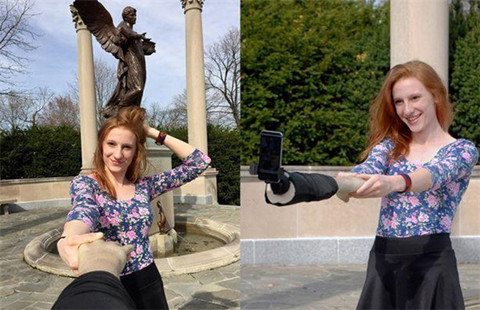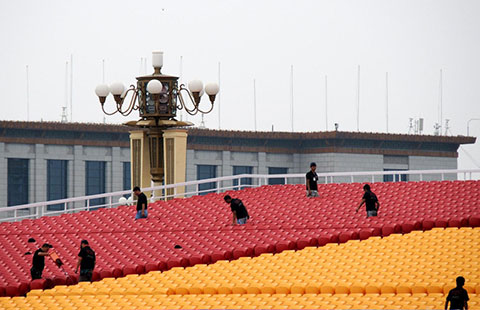
The number of people taking public transportation reached a record high for the year as Beijing imposed traffic restrictions in advance of the Sept 3 military parade, prompting an increase in subway train capacity and safety measures.
On Aug 20, the first day the odd-and-even license plate rule was imposed, more than 24 million people traveled on public transportation, a record high for this year, the Beijing Commission of Transportation said. More than 11 million used rail transit, a 10 percent increase from the previous Thursday.
The number of cars on the city's roads was expected to drop by 35 percent to 50 percent from Aug 20 to Sept 3 during two events - IAAF World Championships in Athletics and the parade marking the 70th anniversary of the victory in the Chinese People's War of Resistance Against Japanese Aggression, the commission said.
To meet the growing demand, Beijing's 17 subway lines have increased capacity, said Feng De, who manages rail transit operations and supervision at the commission.
The morning peak, during which subway trains depart at a higher frequency, typically from 7 am to 9 am on workdays, was extended for half an hour, Feng said.
"There are also trains on standby at some big and crowded stations such as Dongzhimen, Xizhimen, Guomao and Xuanwumen, in case more trains are needed," he said. "On Aug 20, a total of 17 spare trains were used."
Tianjin, as well as Langfang and Tangshan in Hebei province, also adopted the odd-and-even license plate rule for the parade.
The rule posed more challenges for traffic in Beijing this time than previously, such as during the APEC Summit in November, said Chen Yanyan, vice-president of the School of Metropolitan Transport at Beijing University of Technology.
To ensure subway safety during high-capacity periods, the number of staff members was increased at important stations, and train and line monitoring were intensified, Feng said.
Zheng Jinran contributed to this story.
zhaoxinying@chinadaily.com.cn








